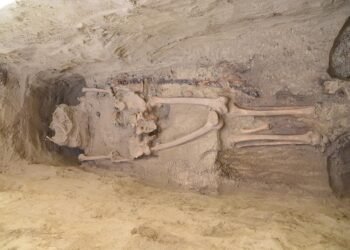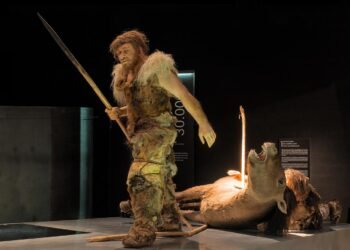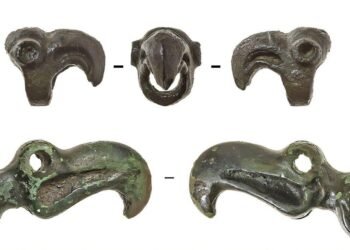Archaeologists working at the Roman site of A Cibdá de Armea in northwestern Spain, Galicia, have uncovered an unexpected discovery: a 450-million-year-old fossilized trilobite that was intentionally modified and likely worn as a personal amulet or ritual object in the 1st to 3rd centuries CE. It is the first recorded case of a trilobite fossil found in a Roman archaeological context and only the eleventh such find anywhere in the world.

Trilobites were marine arthropods that dominated ancient oceans but vanished about 250 million years ago. The fossil uncovered at Armea, a 4-centimeter specimen belonging to the genus Colpocoryphe, is significant not just in terms of geological age but because it shows clear signs of human modification. Researchers documented seven distinct facets of wear on its lower surface, suggesting that it had been shaped or flattened, likely for placement into a bracelet, pendant, or other wearable item. Its reddish hue and fossilization in iron oxide suggest that it originated from the south-central Iberian Peninsula—more than 430 kilometers from where it was found.
This would mean the object was transported through the Roman trade network, possibly via the Vía de la Plata, a significant road connecting Mérida (Emerita Augusta) with Astorga (Asturica Augusta). The trilobite may have traveled along with metal and other materials, reaching Galicia as a highly valued good. Fossils were generally thought to have magical or protective powers in ancient Roman culture, and the Armea trilobite could have been used to ward off harm or disease.

The fossil was unearthed from a Roman-period refuse deposit, where there were animal bones, coins, and pottery. It was probably discarded after the setting broke or after its symbolic value had diminished, according to the researchers. Amazingly, the trilobite was found near an inscription bearing the name “MAXSIMVS,” which might link it to a household shrine or lararium, where offerings like this were placed.

The study, which was published in Archaeological and Anthropological Sciences, emphasizes that ancient Romans, as well as earlier and later cultures, tended to attribute mystical significance to fossils. Large bones were believed to be the remains of giants or mythic beasts, and invertebrate fossils such as trilobites, though rarer, were seen as shield items of Earth’s past. Historian Suetonius even reported that Emperor Augustus collected fossils and exhibited them at his villa on Capri, perhaps creating one of the first paleontological exhibits on record.
Other ancient societies revered trilobites as well. A perforated trilobite, 14,000 years old, was found in France and used as a pendant during the Paleolithic. In medieval Estonia, they were buried as protective amulets, and in North America, the Ute people considered them to be “petrified water bugs” with spiritual power. In Chinese texts from the 7th century, they are referred to as “stone worms” used in traditional medicine.

The segmented form of the trilobite may even have influenced Roman jewelry. Trilobitenperlen, a type of bead worn by children and women and believed to offer protection, were made from black glass or jet. While they have not been found at Armea, the study suggests the form of such beads may have been inspired by trilobites such as the one found there.
This unprecedented find at Armea sheds light on Roman beliefs, suggesting a reverence for fossils as something greater than curiosities—fossils were objects of meaning, memory, and magic.























Comments 0